DZĪVESZIŅA - the Latvian answer to Danish hygge or Finnish sisu.
Every time I hear about various, mostly old countries made extra famous because of their intangible heritage or ways of living, I ask myself - why isn't Latvia on the lists as well? Whether it's the Danish "hygge", the Finnish "sisu", the Japanese "ikigai" or the Swedish "lagom", it seems Latvians also have a lot to offer. After all - Latvian tribes were one of the last pagans in Europe and our worldview is very much rooted in some crazy-old traditions. So, what if I told you we have our own unique way of living that's just not made popular by the commercialism (yet)?
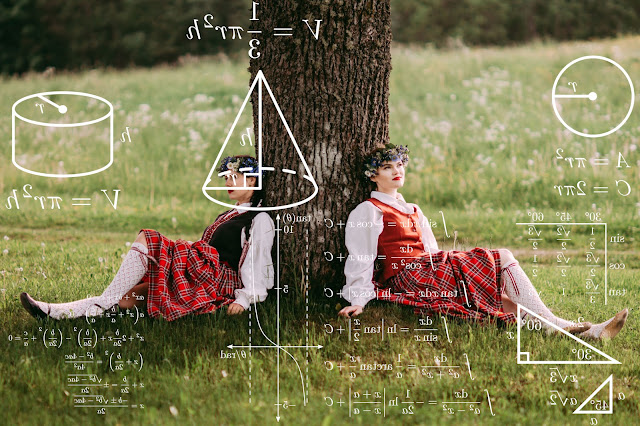 |
| Base image: Shutterstock. |
"Dzīvesziņa", of course, is a lot more than its direct translation in English - the "wisdom of life", "knowledge of living" or "folk (a.k.a. traditional) wisdom". In most cases it refers to the "indigenous know-how" as the word is mostly used when looking into the worldwiew of the ancient Latvians. But the concept of "dzīvesziņa" is immortal as it requires constant daily observation of the world, nature and cosmos, surrounding ecosystems, the weather, even the time of the day while weaving these observations into spoken, written, sung or practical matters. Then it requires looking into oneself, seeing a universe within each individual and then building one's surroundings, households, habits, relationships and rituals according to the outer and inner processes.
In result, many important and also sometimes comical customs emerge, glueing the Latvian identity and their surroundings together, and probably are the reason we, as a folk, are still around and keeping it strong after wars, plagues, occupations and the globalization (read - the singularity of culture). In short - dzīvesziņa is the universal Latvian wisdom of understanding the rites of the nature and universe while being part of, living by and using this wisdom respectfully.
 |
| A
great example of falling in love with the Latvian dzīvesziņa is this
documentary by Ināra Kolmane. Hard to find, but very entertaining and
informative to watch. |
What makes dzīvesziņa special is how it's woven into our life so deeply we don't even recognize it as something extra. The Latvian Midsummer celebration is a long awaited astronomical event, collecting and drinking herbal teas is a Latvian right, respecting the forests is often our duty, performing folk songs and folk dances is our backbone. It only takes a dedicated foreigner to remind us how special our dzīvesziņa is and how the combination of its elements makes us unique.
I don't claim to be taken into account, and this is not an anthropological research. Also remember - this editorial is not a promise since I know many Latvians who don't give a flying toss about the nature and our local wisdom; also the world is a fluid matter these days and is frequently driven by global trends. But here are only some of the many elements I believe build up the essence of Latvian dzīvesziņa and give some notion on - how to live a life like a Latvian.
Countryside
When Easter, Midsummer or Christmas hits, Riga is half dead. One of the main reasons is that Latvians often have their country house for the family or friends to visit - Latvians strongly romanticize the image of traditional homestead and flee the capital at the first opportunity. But even those without one are frequently leaving town for weekends and even for weeks. How come? I guess, one important part of the dzīvesziņa philosophy is simply being close to the nature - not only using it as a domain for living, recharging and spending free time. It's also a place we all feel responsible for as well as we don't feel right in our skin if we can't visit a forest, stroll by the sea, swim in the wild (we recommend googling the Latvian winter "seals"), or simply sit by a lake and fish. Meanwhile, a contemporary anecdote states you are not a true Latvian if there's no pair of rubber boots in your car boot.
For many cultures such activities seem like a waste of time, but not for us - rooting with nature is often mandatory to reboot and recharge ourselves, and is often more valuable than being in a crowd (see - Introverts). Knowing the many names of species of fauna, flora and fungus seems logical to us. Being able to chop wood, grow your own food or pick the "fruits of the forest" (see - Foraging) is a human right. We like bio and eco not because it's popular, we like bio and eco because we can't live otherwise; everything homemade or self-grown might not always seem the best, but it's always the most celebrated.
Being close to the countryside also requires us knowing various hacks of the nature (see - Foraging, Ticējumi). Many of them might seem like useless remedies, but some of them really work and are still strong with the people. For example, the great plantain: even before the biochemistry Latvians knew how to put it on wounds. Or burning juniper twigs to disinfect rooms. Once you start looking for such remedies, a whole rabbit hole opens up.
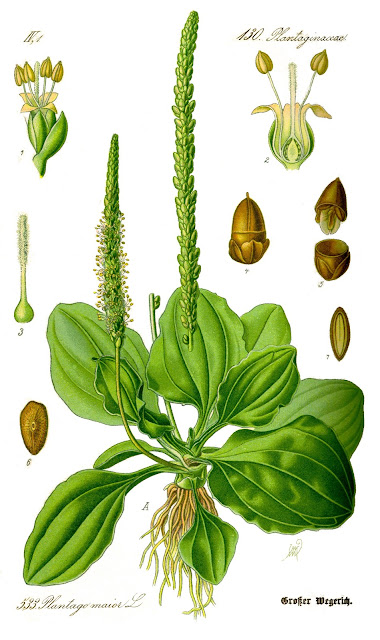 |
| Lielā ceļteka, sometimes known as ceļmallapa (Great plantain or plantago). |
Folk heritage
At least one thing Latvians are definitely famous for are "dainas" - around 300 000 of such folk songs collected and publicly available for all. Many of them chronicle the history of ancient Latvians, however most of them have been used for centuries to describe the passage of time and life, the construction of the universe, or the order of the world; also to preserve the respective knowledge for the generations to come. They are hard to translate because every quatrain (verse consisting of 4 lines) consists of multiple symbols, subtexts, metaphors, etc. types of meanings and expressions that need to be explained before translating each daina first.
Interestingly, dainas still live on and are used. If not for practical reasons, such as explaining the universe or breathe motivation or strength into the reader, songs are sung in various forms until today. One of the most known forms in the world is the Latvian song and dance festival that very much employs Latvian folk and dance heritage - a more than 40,000-strong choir and dance ensemble performing once every five years is a must-see event globally.
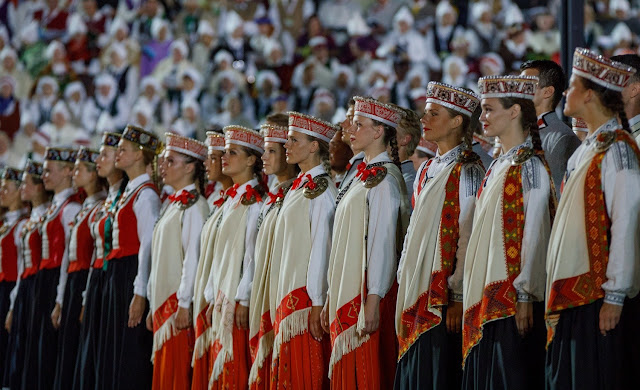 |
| National costumes during the Song and Dance festival. TV3, 2018. |
Another common element of our folk heritage are the national dresses or costumes, some of them are even ethnographic, representing the pre-Christian era even a 1000 years ago. For us, the costume is not only sexy, it also represents a history of how to keep a good piece of design. It's elements are universal, they can and are adapted to everyday usage (many Latvians choose linen shirts, dresses and blouses over other things especially in national celebrations, people also enjoy wearing the ethnographic jewellery alot). Finally, hand-picked and self-made flower and oak-leave crowns are an obligatory part of the Midsummer festiva. And it's a big "no" to plastic crowns - no one in their right mind would by anything at any store, only your own made "vainags" from oak twigs and flowers of the meadow counts.
Another important part of our folk heritage is the understanding of cosmos via our seasonal celebration. Even when intervened with the Christian world, multiple national celebrations are deeply rooted into paganism and our traditional approach to the movement of the Sun and the Moon. For example, the Summer solstice is totally a pagan celebration, many tend to celebrate Christmas according to the idea that it's also a solstice rather than the birth of Jesus. Then Easter, although the most Christian celebration here is also mixed with our own folklore, traditions, songs or acts that don't seem Christian at all (e.g. swinging in the swings to fight mosquitoes in the summer or spanking everyone with pussy-willow during the Palm Sunday and chanting some folksy rhymes:
"Apaļš kā pūpols, vesels kā rutks!
Slimība arā, veselība iekšā!"
(Round as a pussy-willow, healthy as a black raddish!
Illness out, healthiness - in!)
Technically, we even have our own new year "Meteņi" that comes every beginning of February, according to our solar calendar. It is usually marked with a carnival although there are places in Latvia where the masking and tradition is strong and rooted in the pagan tradition - the scarier the better.
 |
| The solar calendar and seasons of the ancient Latvians. Uldis Trapencieris, 2014. |
Finally it's important to mention most of Latvian pagan deities are often mentioned in various daily situations. for example, Laima is the deity for destiny, Māra is the mother of earth (often used when talking about someone who died and is now entering the realms of Māra). Meanwhile the unofficial anthem of Latvia celebrates "Sun, Thunder, Daugava (river)" opposite to the official "God bless Latvia". The
ancient deities, elements of the nature, their duty and deeds on this planet sometimes are rendered more poetic and important to us than the deeds and demands of any other written god. For example - people even choose to say "Saules mūžu Latvijai" (Let Latvia live as long as the Sun lives) instead of "God Bless Latvia". As of out of precaution - gods might change, but the Sun has been around since the dawn of time and, Like Latvians, will be around forever.
 |
| Probably still the largest mural in the Baltic states depicting the "Sun, Thunder, Daugava" song. Created during the "Blank Canvas" festival in Riga. Dainis Rudens (Rudens Stencil), KIWIE, 2014. |
Foraging
An essential part of dzīvesziņa is the knowledge, skill and ability of foraging. Starting from knowing when, where and which wild herbs and teas, hazelnuts and berries to pick, ending with a whole different world - mushrooms. The latter is what makes Latvians rise above everyone - our craze for mushroom-picking is already well known and soaked in its own mythology; there is literally no fungus we can't make edible. What makes it even more legendary - mushrooms don't grow everywhere, and it's also important to know your special foraging places and keep them secret. There's a famous anecdote that very much explained the importance of mushrooming in the Latvian worldview - during the pandemic people joked that some Latvians don't want to get vaccinated, because Bill Gates will then use the microchips mixed into the vaccine to track down our best mushroom places!
Another hack of the nature is the birch sap (dzīvesziņa is actually the wisdom of hacks of nature!). Who in their right mind would drain a tree sap other than the Baltic people and Canadians (when making their maple syrup). But, as it turns out, the "bērzu sula" is one of the most known delicacies in the spring that often gets prepared for later - as a refreshing soft drink or even as a Latvian sparkling wine. It is also rich with minerals - for free!
Finally, as funny as it sounds we even use an ironic expressions "Latvieši - vācēju tauta", meaning - "Latvians, the hoarding nation". It's in our nature to gather everything we can, for various reasons, and every kid in the country who's met any of their grandparents know how strong this habit has been especially with the elderly of the country. During the Soviet times and even before every grandma and grandpa amassed everything that could be "useful one day". I could name just some of the things, but then I would disrespect thousands of other items. In short - in order to know a real old-school Latvian, you must peak into one's shed and see what's been amassed. It will amaze you.
Introverts
Latvian dzīvesziņa is regularly used as an synonym for "you only talk when you know". Often even - you don't talk at all if you don't have to. It very much defines our introvert identity and, at some point, Latvians are proud to be a formidable rival to another introvert champions, the Finnish. Many foreigners agree it's hard to crack Latvians open, and it's true. Even if you think people in the capital are more easy going, talkative and open - just exit the city and enter the countryside. People are better off there without saying a word for days.
However, here's the catch. None of that is related to us being angry, arrogant, dull, dump, or else (ost of the time). Our controversial "introversy" is deeply rooted into the life-long qualities of Latvian dzīvesziņa often mixed with a slight notion of always existing irony. Being quiet don't not always mean we have nothing to say, on the contrary - maybe so much that it's hard to find where to start. Or that we are unfriendly, but maybe we are simply better off with the nature as it's something we can take care of and something that does not trow their tantrums.
The whole idea of why being an introvert is a spiritual virtue was very well described during the London Book Fair in 2017 when a Youtube video campaign #introvertlatvian was promoted. In the video shorts, the writers Osvalds Zebris and Nora Ikstena, along with other great authors, perfectly coined what it means to be a Latvian and what are the values of the introvert dzīvesziņa. P.S. I totally agree with all Osvalds' examples and also with Nora, especially whe she says that being extroverted is what the popculture expects and demands, not what is the healthiest and truest.
Pirts
The Finns have their sauna tradition going strong, but Latvians have their own sauna or "pirts" as well. What makes it different are the centuries-old rituals that must be kept at all times (however some get easy on them often). Pirts is not just a hot, steamy place located in every private or countryside house. It's not just a place you enter mostly naked and have some nice time with friends or your romantic partners and some beer. Sure, it often happens like that, but its crucial for many to follow procedures "correctly".
.jpg) |
| Traditional Latvian pirts (© Latvijas Etnogrāfiskais brīvdabas muzejs). |
At first, Pirts was the place were babies were delivered in the olden days, therefore, multiple rituals of bathing newborns developed. ALso, every Latvian knows the magic of "spanking" or "pēršanās" when specially prepared brooms, usually from birch leaves, are prepared for massage and vitalization purposes. Then there are "pirtnieki" or "pirtnieces" - the masters of the Latvian sauna bathing rituals, and, believe it or not, often such rituals take hours and are nothing like hanging out with friends and beer. That's serious and spiritual bussiness.
In fact, there might be a reason why pirts is not installed in almost every house or apartment like in Finland. After all - why shouldn't it be this way if pirts is so important to Latvians? For us the true pirts is part of a countryside. Its wood, not stone or other material, it's a often a separate building by a body of water, it's often important for pirts to be separated from daily life - serving the role of a spiritual sanctuary for body, mind and soul. This is probably the reason many foreign visitors are unhappy when there are really not that many great pirtis in Riga and it's hard to experience a true Latvian sauna. Simply because of two things - the best are in the country and you must know a local to be taken to the best.
As I remember from my childhood in the nineties - pirts was a special place you visit not more than once a week or even once in two or a even a month. On the contrary, the nineties were also the times when countryside guest houses (with pirts service always included) popped up like mushrooms in Latvia, promising the riches of both inbound and domestic tourism. That was the time when the mythical value of pirts devolved, and they became a place for sophomore kids and middle-aged men to have parties, get drunk, eat junk food or make shady deals. However recently the seminal value of pirts has returned, and it's again seen as a collection of various Latvian wisdom - from architecture and craftsmanship to health, spirituality and direct connection to the nature.
 |
| Ziedlejas welness resort. OpenAD, 2020 (© Alvis Rozenbergs). |
Spodrības diena
 |
| During Lielā talka at Jaunciems, 2021 (talkas.lv). |
Ticējumi
For example, there is one well known ticējums, as old as the Latvians perhaps, that just works almost everytime. Turns out it has its own wonderful rhyme in English: "Red sky at night, shepherd's delight. Red sky in the morning, shepherd's warning." The saying is most reliable in lands where their weather systems predominantly come from the West, as in Latvia.
"Red sky at night, shepherds delight" can often be proven true, since red sky at night means fair weather is generally headed towards you. A red sky appears when dust and small particles are trapped in the atmosphere by high pressure. This scatters blue light leaving only red light to give the sky its notable appearance.
A red sky at sunset means high pressure is moving in from the west, so therefore the next day will usually be dry and pleasant. "Red sky in the morning, shepherds warning" means a red sky appears due to the high-pressure weather system having already moved east meaning the good weather has passed, most likely making way for a wet and windy low-pressure system.1
Sadly, some ticējumi have mixed together with Christian superstitions and are rendered invalid when connected with real-time observations. Some sound weird as the wording and actions to be taken are centuries old. Finally, some ticējumi have lost their power simply because of the climate change - the weather is so unpredictable even the meteorologists cannot predict it for too long ahead. For example, one of the most famous ticējums in Latvia is: "if you swing at Easter, the mosquitos won't bite in the Summer." Sure this thing does not work in today's climate, many Latvians believe it never really worked. But we still do swing at Easter, as we hope this ticējums will proove itself worthy. 'Cause mosquitos is that one part of nature we despise - whatever works!
***
To conclude, the Latvian dzīvesziņa means - the world is around us and the world is within us. Our past has been a bumpy road and often there has been no one else to rely on other than the nature and ourselves. And, maybe because of that, our worldview is still going strong and has proven itself to be functional the same way hygge, sissu, lagom or ikigai are!
So, the extroverted and popcultural people of the world - bare some patience towards us, and we will show you the deep side of Latvian dzīvesziņa we believe already hundreds of thousands of people around the world share - unknowingly.
MORE INFO
Read: you can find some interesting Latvian remedies and pirts traditions we still use in this great book "Remedies" by Sasha Huber and Petri Saarikko (co-curated by Ieva Laube). The piece was created during the first RIBOCA biennial and you can read more about it here!
Listen: there are hundreds of ethnographic, folk or traditional bands,
orchestras, and more across the country who use the Latvian folk heritage - from bands only
known in their regions to internationally acclaimed acts and world heritage. The most popular band today are Tautumeitas, blending folk with pop, heavy music fans have definitely heard of Skyforger, one of the most preservable UNESCO voices are the Suiti burdon singers, the most prolific post-folk band is Iļģi. Again, once you enter the rabbit hole, there is no way back.
What else: you can peek into a great article by BBC about the #iamintrovert campaign and read more about what it means to be - us.
1 https://www.metoffice.gov.uk/weather/learn-about/weather/how-weather-works/red-sky-at-night↩
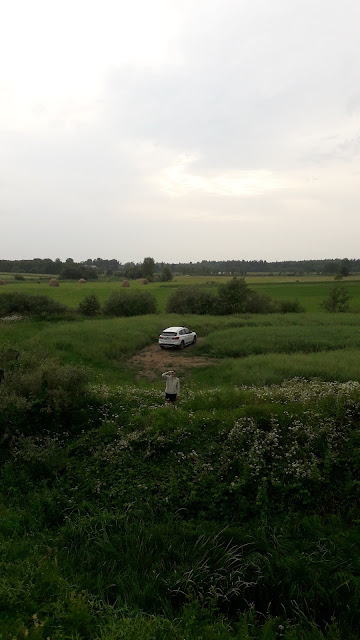

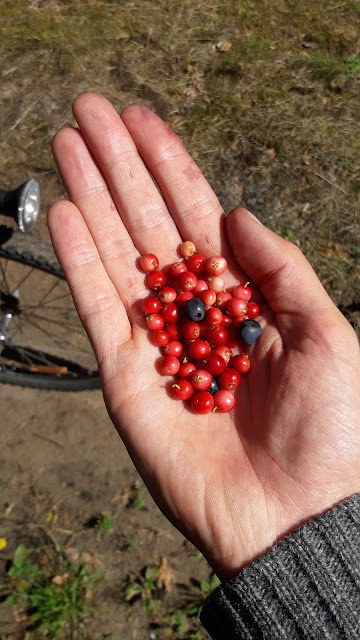

Great article! We love Latvia :) many similarities with Finnish culture.
ReplyDeleteGreat article. The section on talkas could do with an addition: it’s also the concept of true neighbourliness, lending a hand to do something that’s impossible for one person/family/homestead to achieve. The nearest parallel is Mennonite “barn raising”. In the past, you’d have a talka to help thresh that year’s grain. In post-war refugee Latvian communities in, e.g. the UK this was how Latvians created community centres like “Straumēni” and before that “Mūsmājas”. Money was scraped together for the purchase but what made it the community’s home were the countless hours of volunteer labour. No expectations other than a good solid meal and plenty of beer after the day’s work as done!
ReplyDeleteYes, that could be true! Thanks for your comment!
DeleteWonderful article. Paldies!
ReplyDeletePaldies! Lielisks raksts angļu valodā runājošiem lasītājiem!
ReplyDeleteGreat fun to read-- I am half Latvian (mother's side) born and raised in Canada, within Mom's extended family. So much of this sounds like me...lol (don't believe in black and white-as in first video- I always said 300 shades of grey...lol)
ReplyDeleteGood readingg this post
ReplyDelete